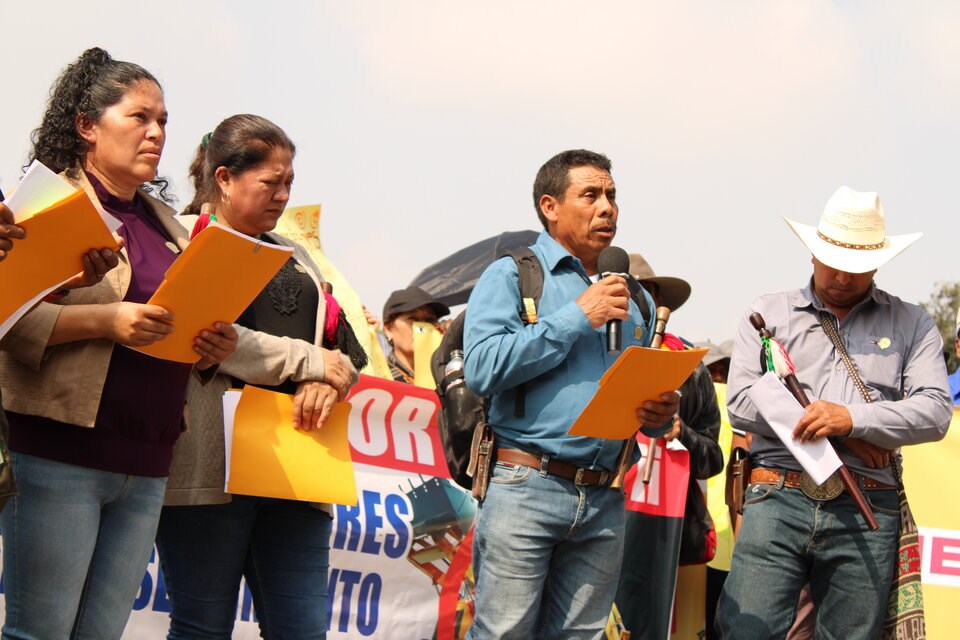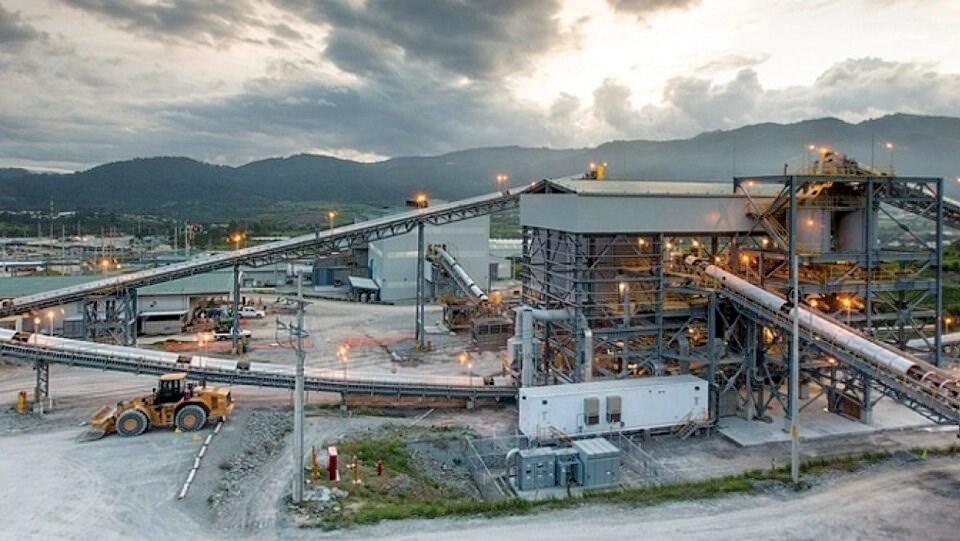Two delegates from a Guatemalan Indigenous group travelled to Vancouver this week to call on Canada to end its support of a B.C.-based mining company’s massive silver mine in Indgenous traditional territory.
Aura Marisol Guerra and Marta Muñoz, two of 59 representatives of the Xinka people, told BIV they had travelled to Canada to deliver a message: Pan American Silver and their Escobal mine are not welcome in Xinka territory.
“The people have spoken. We don’t want mining companies in our territory,” said Guerra.
She added that the Xinka Parliament is calling on the Canadian government to direct its Guatemalan embassy to avoid helping the company reopen the mine, which has had its mining licence suspended for eight years.
Conflict between the Xinka people and Canadian mining interests dates back to 2011, when Vancouver-registered Tahoe Resources purchased the Escobal mine through a subsidiary.
It is estimated to hold more than 360 million ounces of silver, making it one of the richest known deposits in the world. Tahoe was granted a 25-year licence in 2013.
But the Xinka people — an Indigenous group of about 260,000 people — say they fiercely oppose its operations.
A statement from the parliament says it is calling for the mine’s permanent closure because of ongoing threats to the environment, displacement of residents and destruction of “sacred places and archeological sites making it impossible for us to reconstruct our history.»
The statement criticizes the Guatemalan Ministry of Environment and Natural Resources for not understanding “the most basic units of analysis, such as watersheds” to determine how Xinka territory is being impacted.
The statement points to studies that have found contamination from heavy metals and a significant drop in water availability.
Canadian officials helped mining company despite violence
On April 27, 2013, a private security force contracted by the mine’s previous owner allegedly opened fire on peaceful protestors, seriously injuring at least six men and a teenager as they attempted to flee. A civil lawsuit later filed in B.C. Supreme Court claimed Tahoe Resources had used excessive force and should be held liable.
At the time, the company claimed security personnel had fired rubber, not lead, bullets and that the person in charge that day had been fired for breaching company policy. The case was settled outside of court in 2019.
Xinka delegates told BIV that violence, intimidation and unfounded detentions — sometimes lasting months at a time — have continued in the years since. In 2014, a 16-year-old Xinka girl who actively opposed the mine was shot dead by an unknown gunman. At times, the Guatemalan government has sent militarized security forces into the community.
Jennifer Moore, an associate fellow for mining and trade at the Institute for Policy Studies in Washington, D.C., says she has obtained documents through freedom of information requests that show the Canadian embassy helped Tahoe Resources navigate access to the mine even through its most controversial moments.
Between 2012 and 2014, Moore said those documents showed the Canadian embassy was trying to facilitate contacts and supports to prevent the Guatemalan government from raising official royalty rates on Tahoe Resources.
In 2017, the Guatemalan Supreme Court suspended Tahoe’s mining licence, and a year later, Pan American Silver absorbed the mining company in a $1 billion takeover.
The Canadian corporation, Guatemalan government and Xinka people have been locked in a court-ordered consultation process since.
“As one of the three court-named participants, Pan American continues to encourage and foster a good faith consultation in full compliance with the terms of the Constitutional Court ruling, the company said in a statement to BIV.
“We are committed to continuing to participate in an open, respectful, inclusive and transparent manner.”
Conflict over mine has roots in civil war, says expert
The latest round of conflict is part of a long history of state-sponsored violence against Indigenous people in Guatemala that includes a 36-year-long civil war that decimated Indigenous communities.
For years, soldiers systematically entered villages to carry out mass killings and disappearances. More than 80 per cent of the victims — including an estimated 200,000 people killed and 43,000 forcibly disappeared — were Indigenous people.
In the late 1990s, a number of multilateral organizations helped broker peace accords in Guatemala. But that process failed to address the root causes of the conflict, including land dispossession, inequality and impoverishment of much of the rural population, said Juanita Sundberg, an associate professor at the University of British Columbia’s department of geography.
Sundberg, who has carried out research in Guatemala on and off since 1992, said the peace process also opened the door for a dramatic shift in Guatemala’s economic policy that allowed a number of international corporations to step into the country
“The Canadian embassy was very much involved in rewriting mining codes to the benefit of corporations,” said Sundberg.
On Wednesday, Grand Chief Stewart Phillip, president of the Union of British Columbia Indian Chiefs, called on Canadian Prime Minister Mark Carney to speak out against the treatment the Xinka have suffered and “do whatever he can” to ensure they receive justice.
An uncertain process
After the mine’s operating licence was suspended in 2017, Guatemala’s Constitutional Court upheld that decision and ordered Guatemala’s government to engage in a consultation process with the Xinka people — the largest consultation process with an Indigenous group in the country’s history.
Today, that consultation process faces a number of uncertainties.
In December 2024, the leader of the Xinka Parliament fled Guatemala with his family over threats. And in April, Guatemalan police detained deputy minister of sustainable development Luis Pacheco after prosecutors accused him terrorism in connection with his participation in peaceful protests during Guatemala’s 2023 general elections. Pacheco was overseeing the Escobal consultation process.
Human Rights Watch has described the charges against Pacheco and another Indigenous leader as “spurious” and connected to peaceful opposition to the country’s attorney general and other political leaders attempting to overturn the results of the election.
Following the charges, Canada’s Guatemalan embassy said in a social media post it stood in “solidarity” with the Indigenous leaders.
Amid the uncertainty, there appears to be no consensus on how the Escobal mine could affect the Xinka.
This month, Moore and her colleagues at the Institute for Policy Studies released a report analyzing the cumulative impacts of the Escobal mine on Xinka territory and people.
It found mine development had damaged homes and led to forced displacement of residents. The report also concluded there had been some levels of water contamination and a “worrisome drop in the water table” in a community next to the mine.
And in the case of an earthquake or heavy rains, the report claimed the mine’s tailings facility presented a “significant risk of collapse” — a disaster that would likely cover 108 hectares of land with toxic tailings, leading to “the total loss of homes, crops, water sources, and other infrastructure,” according to the report.
Sean McAleer, Pan American Silver’s senior vice-president of strategic initiatives, responded to the findings in a letter dated May 7.
The report, wrote McAleer, contained “several inaccuracies, biased conclusions and errors” that the company has not had a chance to address.
Xinka wait for response
Earlier this month, the Xinka concluded a four-year assembly process where their people weighed their position on the future of the mine.
On May 8, Xinka delegates, including Guerra and Muñoz, travelled to Guatemala City to tell the president and his ministers their decision.
A spokesperson for Pan American Silver said the Minister of Energy and Mines informed the company it had received a statement from the Xinka Parliament and was preparing a response set to be presented to the Indigenous group in early June 2025.
Until then, Guerra said the consultation process must continue.
“We continue waiting for a response,” she said.

Both Xinka delegates plan to return to Canada in September to speak directly with Global Affairs Canada in Ottawa. The department did not respond to questions from BIV by the time of publication.
“Right now, the most important point is that they [Canada] know Pan American Silver is not welcome in our territory,” said Guerra.
“I think we’ve made it clear.”



